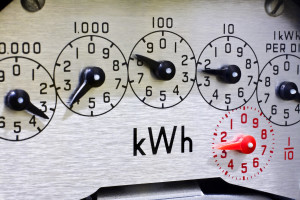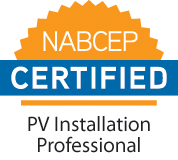Solar Payback and Financials
 There are many benefits to going solar, such as minimizing the impact to the environment and achieving energy independence. Beyond these reasons however, there are real financial advantages in investing in a solar system.
There are many benefits to going solar, such as minimizing the impact to the environment and achieving energy independence. Beyond these reasons however, there are real financial advantages in investing in a solar system.
For many homeowners and small businesses, not going solar is the more expensive option as described below. The following financial analysis assumes the typical system of 8.8kW, a $190 per month electric bill, a system life of 30 years (though it will last longer then that), and an inverter replacement after 15 years.
Direct Savings
Looking at the direct savings of a PV system is a good first step in assessing the advantages of going solar. A sample 8.8kW system will save you $2,280 in electricity costs over the first year. This works out to be $67,000 over the warranted life of the system, once you subtract the cost for a new inverter after 15 years.
Factoring inflation (2.0%) into the equation means the cumulative savings will actually be $91,500. However, when you adjust this value taking historical PSEG increases into account, the cumulative savings is $116,500 for your $10,900 investment!
Solar Payback
A common way to analyze a potential investment is to look at the solar payback period. The system payback is the amount of time it will take to recover your cash outlay. This can also be referred to as the break-even point. Adjusting for inflation only, a standard system will have a break-even point of about 5 years.
Once you take utility price increases into account, the break-even point is only about 6 years. The PV system will pay for itself well before the warranted life of the panels is surpassed, allowing you to generate free electricity for the remaining 24 or so years!
Positive Cash Flow
Financing is a feasible option for obtaining a PV system for homeowners or small businesses. In most cases the savings in utilities will offset the monthly loan payments. The sample 8.8kW PV system will save $190 per month.
If you choose to finance the purchase (e.g. 3.99% over 12 years), the monthly payment would be approximately $110 therefore giving you a net cash flow of $80 per month. The monthly savings will grow each year as utility rates increase, while the loan is a fixed cost. The tax benefit of the interest on the loan will be reduced and eventually eliminated, but this loss will be overshadowed by the compound growth of the savings.
Annual Rate of Return
If financing is not required for a PV system, the Compound Annual Growth Rate (CAGR) is a valuable analysis tool to compare a PV system to other common investment vehicles. Historically, cash (short term treasuries) yields 4.1%, bonds yield 4.8%, and stocks have the highest return with 10.1%. The comparable CAGR of the average PV system (8.8kW) will actually be around 24.0% once you factor in inflation.
This return increases to 26.0% once you consider historical increases in utility rates. Therefore, even compared to the high growth rates of stocks (which is difficult to achieve in recent times), a PV system provides a much better return on your investment (ROI)!
Home Value Increase
An often overlooked benefit is the increased value of a home or business which has a PV system installed. A PV system reduces the operating costs, consequently increasing the value of the property.
A comprehensive research article published by the Appraisal Journal determined that for each 1$ decrease in annual utility bills, the selling price of the home increased by $20.73. However, since the cost of equipment has since dropped it’s probably more realistic to use a value of $10. The average 8.8kW system will have annual savings of $2,280 which would increase the resale value of the property by $22,800. This is an immediate 125-175% return on your investment!
It should also be noted that in NY State, any increase in assessed value due to the installation of solar panels is EXEMPT from property taxes for 15 years.


